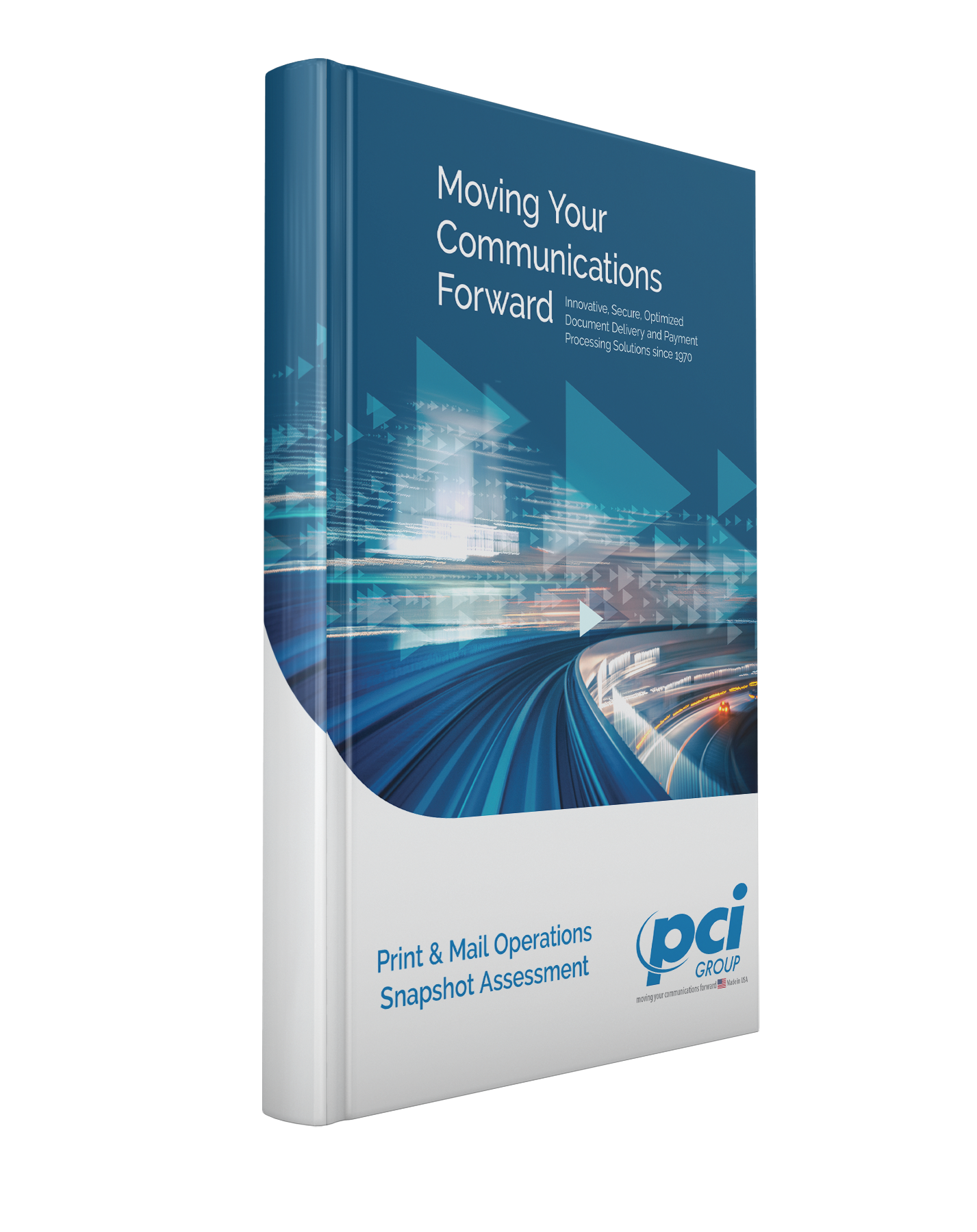
A Better Way to Optimize Operations: The Case for Outsourcing Print and Mail Communications
The case for outsourcing mail and print communications is one you’ve probably heard before. Since then you’ve probably considered it for almost every segment of your business outside your core competencies. Most businesses have, as the global outsourcing market totaled $88.9 billion for U.S. businesses in 2017. So if you haven’t made the move to outsource, what’s keeping you from making the move? What are your doubts?
Outsourcing Print and Mail Operations Benefits Are Greater Than Simply Cut Costing
Outsourcing has long been seen as a tool to cut costs, however, there are other benefits, too. According to a Deloitte global outsourcing survey, businesses now look beyond just the numbers. They’re learning that partnering with the right provider gives them exposure to technology and functionality they would not have had on their own.
The survey found that 35% of organizations measure the “innovation” of their outsourcing relationships. This innovation includes solving capacity issues, enhancing scalability, and gaining access to intellectual capital. Bottom line: outsourcing is about more than just reducing costs.
Even if you have looked at an outsource printing company before, it may be time to take a second or even a third look. At the top of your list may be confidential printed documents, specifically those sent to customers. This process requires printing, envelope insertion, and postage at a minimum. Large expensive equipment, labor, and repair costs are often the big budget items; but there are numerous other costs. When you combine this with the fact that many businesses are experiencing declining needs for paper documents, many companies are taking a much closer look at outsourcing than ever before.
Now, let’s talk about how and when outsourcing makes sense.
Why Outsource Non-Core Business Functions
Besides the obvious reasons of reducing costs, which frequently ranges from 20-40%, there are other benefits as well. When you work with a provider that focuses on this area exclusively, they are more likely to do it better than you. But if you are unsure of all the areas you should consider in your decision, consider these reasons:
- Personnel: Are costs for labor going up while volume goes down? If this is the case, then outsourcing is probably a good choice.
- Equipment: To print and mail compliance documents, you need sophisticated equipment, which means high-dollar leases and always having to keep up-to-date on the latest and greatest.
- Scalability and Efficiency: When you do things in-house, it’s often hard to scale things outside core competencies. You may not have the infrastructure for it. If efficiencies are not being met, then there is cause for concern.
- Regulation and Compliance: Has it become overwhelming for your in-house staff to keep up with regulations and compliance? If so, it’s time to take a serious look at this. Failure to properly adhere to compliance regulations can be costly both in fines and company reputation.
Outsourcing: Get Started with Print and Mail Customer Communications
If your organization currently runs an in-plant, then it could be a great opportunity to pass off this function to the experts. Why? Because there are substantial costs associated with keeping your in-plant up-to-date and functioning. In fact, a Fortune 1000 company could spend up to $100 million a year on printing. While this figure includes all printing, not just customer communications, the printing mailed to customers was certainly one of the leaders.
Many paper focused industries like insurance and banking created their own in-house in-plant because they thought it would save money. Only to later discover that the upkeep and maintenance of the equipment is way beyond the costs that they projected. There are other costs that often go unrealized too, like fees related to keeping facilities up and running and the costs of to maintain those facilities. Outsourcing eliminates all of these headaches.
What the Customer Communication Experts Can Do for Your Business
It’s not just reducing the printing and mailing expense and the lease fees, postage, labor, and more. There are plenty of other benefits as well. Reduced exposure to security breaches, less exposure to risk and enhanced ability to collect revenue and cross-sell to existing customers are benefits you may enjoy by outsourcing.
Don’t think you’ll lose control of communications. In fact, you’ll probably have more control and visibility than ever. This is because outsource providers frequently offer services that aren’t part of your current process. With document tracking, each letter can be tracked from initial receipt to postage.
Print and mail specialists can also offer address management which scrubs and verifies the address based is a deliverable address using the U.S. Postal Service’s Intelligent Mail Barcode (IMB). This helps reduce returned mail volume and the costs associated with it.
Then track your letter through the mail stream in real-time. You’ll be able to drill down to the individual letter, whether you sent 100 or 1,000,000. This gives you verification that the letter was delivered, especially helpful in any invoicing or collections notices. Should your communication contain return envelopes for payment, providers may be able to allow you access to this tracking as well.
With an outsource printing company you will always know where your mailed communications are, which is typically far beyond the capabilities of an in-plant.
How to Get from In-Sourced to Out-Sourced
Now, that you’ve heard all the pros for outsourcing your print and mail letters, you’ll need to go through three steps to see if you really will reap the benefits of outsourcing.
First, assess the existing print operations by a third-party. If you don’t have the capability to do it yourself, invite a third-party expert to do the assessment for you. If you simply allow your in-plant employees to do it, they may not consider all of the key factors in the decision. When you assess your in-plant, it’s not just about the price. Your current operations need to be scrutinized for accuracy, compliance, and efficiency. Ask yourself, can you currently determine what percentage of your letters reach the right individual? When evaluating compliance, ask yourself if you are compliant with all of the various regulations your mailings are subject to. Look at your volume compared to capacity. Is that expensive equipment you have running at capacity or significantly below?
If you decide outsourcing may be right for you, it’s time to discover what to do next.
Steps to Finding Your Outsource Printing Company Print Provider
With these steps, your business will find a better way to manage print and mail.
Step One: Determine Current Operations Opportunities to Improve
Three main areas you should be able to improve are 1) cost per piece and total cost 2) accuracy and 3) increased postage effectiveness. Third-party customer communications experts will have much larger production volumes than yours, so costs are divided by a much larger volume, reducing the cost per piece. Vendors who have upgraded their processes and printing technology will most likely have a much higher accuracy rating. Remember, even one mis-mailed item can damage your company’s reputation and leave you open for litigation and fines. Finally, vendors that mail high volumes should be postal experts. That means, they have the latest technologies to suppress bad addresses, pre-sort your mail and deliver it in the most efficient manner, saving you time and money and increasing the deliver rate of your mailings.
Step Two: Understand the Efficiencies You’ll Gain
Your current process has efficiency issues, especially when manual work is involved. The right partner removes almost all manual labor from the work. This means a larger volume of letters can be sent each day.
Step Three: Analyze the Offerings of Reputable Vendors
This is the time to narrow your list of providers by asking them the questions that matter. Start with these:
- How do you handle compliance?
- What technology features do you employ that make the process more efficient and accurate?
- What is their accuracy rating?
- What kind of print and mailings do you offer (size, full-color printing, insertions, etc.)?
- How secure is your facility?
- What is your business continuity plan?
Step Four: Compare and Choose
Compare the different offerings, pricing, metrics, and other information about your top picks. You should arrange a site tour with those providers that make it past your comparison. Seeing things in-person will give you a real-world look at operations, scalability, and security. Finally, after looking closely at the industry, make your choice with confidence.
Outsourcing Customer Communications Is a Win-Win
Once you’ve chosen your new partner, you’ll find it’s a mutually beneficial relationship. No longer will you be on the hook for costly equipment and leased space to hold it, huge bottom line drainers that don’t fall under core competencies. You’ll also be able to realize the benefits of working with a best-in-class provider, that offers a more efficient and accurate solution to save you money, and maintain confidence that your print and mail operations are now with the experts. Find a better way to print and mail customer communications today with smart outsourcing.


